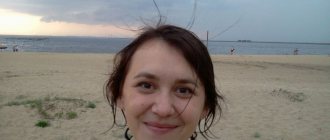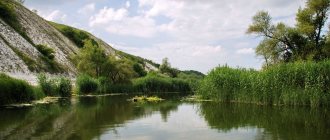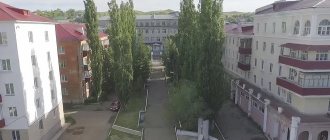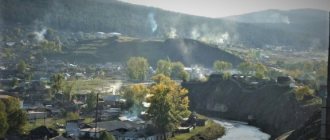| City Khvalynsk Coat of arms |
| A country | Russia, Russia |
| Subject of the federation | Saratov regionSaratov region |
| Municipal district | Khvalynsky |
| urban settlement | Khvalynsky city |
| Coordinates | city(13600)_region:RU_scale:100000 52°29′00″ n. w. 48°06′00″ E. d. / 52.48333° n. w. 48.10000° E. d. / 52.48333; 48.10000 (G) [www.openstreetmap.org/?mlat=52.48333&mlon=48.10000&zoom=12 (O)] (Z)Coordinates: city(13600)_region:RU_scale:100000 52°29′00″ n. w. 48°06′00″ E. d. / 52.48333° n. w. 48.10000° E. d. / 52.48333; 48.10000 (G) [www.openstreetmap.org/?mlat=52.48333&mlon=48.10000&zoom=12 (O)] (I) |
| Based | in 1556 |
| First mention | 1695 |
| Former names | before 1606 - Sosnovka [1], before 1780 - |
| City with | 1780 |
| Center height | 50 |
| Population | ↘12,788[3] people (2016) |
| National composition | Russians, Tatars, Mordovians, etc. |
| Confessional composition | Orthodox, Muslims, etc. |
| Names of residents | Khvalynchane, Khvalynchanin, Khvalynchanka; praisers, praisers |
| Timezone | UTC+3 |
| Telephone code | +7 84595 |
| Vehicle code | 64, 164 |
| OKATO code | [classif.spb.ru/classificators/view/okt.php?st=A&kr=1&kod=63445 63 445] |
| Khvalynsk Moscow |
| Saratov Khvalynsk |
Audio, photo and video
on Wikimedia Commons
K: Settlements founded in 1556
Khvalynsk
- a city in the Saratov region of Russia, the administrative center of the Khvalynsky district.
Population - 12,788[3] people. (2016).
Story
Khvalynsk is one of the old cities in the Saratov region. It was founded in 1556 as the Russian outpost Sosnovka
on the Volga island of Sosnovy.
This settlement was controlled by the cellarer of the Moscow Chudov Monastery[1]. In 1606, the settlement was moved to the site of the modern city and became the village of Sosnovy Ostrov
. Since 1780 - the district town of Khvalynsk[4].
Before the revolution, Khvalynsk and its surroundings were one of the centers of the Old Believers in Russia[2], largely thanks to the Old Believers who fled from the central regions of Russia, these regions were populated.
Up to 56 thousand tons of apples were shipped annually from the river piers of Khvalynsk. Khvalynsk has long been famous for its gardens[2].
In accordance with the decree of the Presidium of the Supreme Council of the RSFSR dated January 12, 1965 “On changes in the administrative-territorial division of the Saratov region”, the city of Khvalynsk was classified as a city of regional subordination of the Saratov region, while all rural and town Councils of Workers' Deputies of the Khvalynsk region were subordinated to the Khvalynsk region city Council of People's Deputies, while maintaining the Khvalynsky district as an administrative-territorial unit).
| View of Khvalynsk from the surrounding hills, 1886 |
| View of the city and the channel Volozhka from the now submerged |
| Pre-revolutionary Khvalynsk |
Notes
- ↑ 123
Great Soviet Encyclopedia. Ch. ed. B. A. Vvedensky, 2nd ed. T. 46. Fuse - Tsuruga. 1957. 672 pp., ill. and maps; 48 l. ill. and cards. - ↑ 1234
Cities of Russia: encyclopedia / Ch. ed. G. M. Lappo. — M.: “Big Russian Encyclopedia”; Terra - Book Club, 1998. - 559 pp.: ill., maps ISBN 5-300-01747-7 - ↑ 123
Population of the Russian Federation by municipalities as of January 1, 2022 (Russian). Date accessed: October 17, 2022. Archived October 17, 2022. - Khvalynsky district (unspecified)
(inaccessible link). Administration of the Khvalynsky municipal district. Access date: July 26, 2011. Archived January 11, 2012. - ↑ 12
Petrov-Vodkin, 1991, p. 35. - Khvalynsky riot: how Doctor Molchanov was killed
- ↑ 1 2 3 4 5 6 7 8 9 10 11
People's encyclopedia “My City”.
Khvalynsk (undefined)
. Retrieved June 23, 2014. Archived June 23, 2014. - The first General Census of the Russian Empire in 1897. Saratov province (undefined)
. Retrieved November 30, 2013. Archived November 30, 2013. - All-Union Population Census of 1939. The size of the urban population of the USSR by urban settlements and intra-city areas (unspecified)
. Retrieved November 30, 2013. Archived November 30, 2013. - All-Union Population Census of 1959. The size of the urban population of the RSFSR, its territorial units, urban settlements and urban areas by gender (Russian). Demoscope Weekly. Access date: September 25, 2013. Archived April 28, 2013.
- All-Union Population Census of 1970 The size of the urban population of the RSFSR, its territorial units, urban settlements and urban areas by gender. (Russian). Demoscope Weekly. Access date: September 25, 2013. Archived April 28, 2013.
- All-Union Population Census of 1979 The size of the urban population of the RSFSR, its territorial units, urban settlements and urban areas by gender. (Russian). Demoscope Weekly. Access date: September 25, 2013. Archived April 28, 2013.
- All-Union population census of 1989. Urban population (undefined)
. Archived from the original on August 22, 2011. - All-Russian population census 2002. Volume. 1, table 4. Population of Russia, federal districts, constituent entities of the Russian Federation, districts, urban settlements, rural settlements - regional centers and rural settlements with a population of 3 thousand or more (unspecified)
. Archived from the original on February 3, 2012. - The size of the permanent population of the Russian Federation by cities, urban-type settlements and regions as of January 1, 2009 (unspecified)
. Retrieved January 2, 2014. Archived January 2, 2014. - All-Russian population census 2010. Number and distribution of the population of the Saratov region (unspecified)
. Retrieved July 6, 2014. Archived July 6, 2014. - Saratov region. Estimated resident population as of January 1, 2009-2015.
- Population of the Russian Federation by municipalities. Table 35. Estimated resident population as of January 1, 2012 (unspecified)
. Retrieved May 31, 2014. Archived May 31, 2014. - Population of the Russian Federation by municipalities as of January 1, 2013. - M.: Federal State Statistics Service Rosstat, 2013. - 528 p. (Table 33. Population of urban districts, municipal districts, urban and rural settlements, urban settlements, rural settlements) (undefined)
. Retrieved November 16, 2013. Archived November 16, 2013. - Table 33. Population of the Russian Federation by municipalities as of January 1, 2014 (unspecified)
. Access date: August 2, 2014. Archived August 2, 2014. - Population of the Russian Federation by municipalities as of January 1, 2015 (unspecified)
. Access date: August 6, 2015. Archived August 6, 2015. - Population of the Russian Federation by municipalities as of January 1, 2016
- Population of the Russian Federation by municipalities as of January 1, 2022 (Russian) (July 31, 2017). Retrieved July 31, 2022. Archived July 31, 2022.
- Population of the Russian Federation by municipalities as of January 1, 2022 (Russian). Retrieved July 25, 2018. Archived July 26, 2022.
- Population of the Russian Federation by municipalities as of January 1, 2022 (Russian). Date accessed: July 31, 2019.
- taking into account the cities of Crimea
- Population of the Russian Federation by municipalities as of January 1, 2022. Table “21. Population of cities and towns by federal districts and constituent entities of the Russian Federation as of January 1, 2022” (unspecified)
(RAR archive (1.0 MB)).
Federal State Statistics Service
. - ELEVATORHOLDING
- THERE ARE MORE AND MORE PEOPLE WHO WANT TO VISIT KHVALYNSK
- New peaks of the ski resort / Zvezda (unspecified)
(inaccessible link). Access date: January 15, 2013. Archived December 13, 2013. - Statistical information
- “Khvalynsk Art Gallery named after K. S. Petrov-Vodkin. 50 years" - on the website "Museums of Russia".
Population
| Population | ||||||
| 1856[5] | 1897[6] | 1913[5] | 1926[5] | 1931[5] | 1939[7] | 1959[8] |
| 12 900 | ↗15 127 | ↗17 300 | ↘9600 | ↗11 800 | ↗15 642 | ↗17 036 |
| 1967[5] | 1970[9] | 1979[10] | 1989[11] | 1992[5] | 2000[5] | 2001[5] |
| ↘17 000 | ↘16 249 | ↘15 572 | ↘14 948 | ↘14 900 | ↘14 800 | ↘14 700 |
| 2002[12] | 2003[5] | 2005[5] | 2006[5] | 2009[13] | 2010[14] | 2011[15] |
| ↘13 752 | ↗13 800 | ↘13 600 | →13 600 | ↘13 414 | ↘13 094 | ↘13 044 |
| 2012[16] | 2013[17] | 2014[18] | 2015[19] | 2016[3] | ||
| ↘12 947 | ↗13 005 | ↘12 985 | ↘12 814 | ↘12 788 | ||
As of January 1, 2016, in terms of population, the city was in 849th place out of 1,112[20] cities in the Russian Federation[21]
Economy
Industry
Food
The city has a butter factory - a producer of dairy, fermented milk products and butter, an oil mill, a plant for canned vegetables and fruits "Cheremshanskoe" and a dumplings factory.
Building materials
There was a brick factory in the city.
Mechanical engineering
An electronic engineering plant and a hydraulic equipment plant operate in Khvalynsk.
Tourism
An important part of the economy of modern Khvalynsk is the tourism sector. Near the city there is the Khvalynsky National Park with a ski resort located on its territory[22].
Famous personalities
- Kuzma Sergeevich Petrov-Vodkin is a Russian and Soviet painter, graphic artist, art theorist, playwright, writer and teacher. The author of the world famous painting “The Bathing of the Red Horse”, which is now in the State Tretyakov Gallery on Krymsky Val
| Kuzma Sergeevich Petrov-Vodkin |
| Self-portrait (painting by Petrov-Vodkin) |
- Radishchev Vyacheslav Petrovich - Soviet inorganic chemist.
- See also “Born in Khvalynsk“
Attractions
You can note the local history museum, the art gallery named after K. S. Petrov-Vodkin [2] (the former home of the Radishchevs), the house-museum of K. S. Petrov-Vodkin. The city also has many stone buildings with original architecture: the Church of the Exaltation of the Cross (late 19th century), the houses of the merchants Kashcheev, Chertkov, Soldatkin, the church on Sennaya Square, the dacha of the merchant Mikhailov-Kuzmin (architect R. F. Meltser).
In 1990, a museum of the poet S. S. Narovchatov was created in the city.
Khvalynsky Museum of Local Lore
The Khvalynsky Museum of Local Lore was founded on January 1, 1899. It was created by one of the descendants of A. N. Radishchev - Mikhail Alekseevich Radishchev (1859-1922), who had collections of exceptional importance, known in Moscow and St. Petersburg. In 1918, the museum was headed by corresponding member of the German, Polish and Russian Academies of Sciences Konrad Gross. From the very beginning, he provided the scientific and local history direction in the development of the museum. The museum's exposition is housed in two buildings. One of them is a two-story brick mansion of the Mikhailov-Radishchevs, built in the style of provincial classicism at the beginning of the 19th century according to the design of A. N. Voronikhin.
Khvalynsk Art and Memorial Museum
The Khvalynsky Art and Memorial Museum was opened on May 1, 1960. The museum consists of two buildings: the art gallery named after K. S. Petrov-Vodkin, located in the former possession of the great-grandchildren of A. N. Radishchev, built in 1871, and the artist’s house-museum, built in 1895. The gallery presents early and late sketches, paintings and drawings by K. S. Petrov-Vodkin, Old Believer icons of the late 18th - early 20th centuries, paintings by Khvalyn artists from K. S. Petrov-Vodkin’s circle - V. F. Orekhov, G. G. Platonov, L. A. Radishchev, I. A. Elatontsev, as well as the artist’s friends and acquaintances - I. S. Goryushkin-Sorokopudov, P. V. Kuznetsov, E. M. Bebutova, A. V. Lentulov, N. V. Kuzmin, V. A. Favorsky, artists of the 20th century and artists working in the summer in Khvalynsk in the open air. The house-museum presents early works by K. S. Petrov-Vodkin, his personal belongings, household items of the artist’s parents, photos and documents from the family archive, and more.
Content
- 1Geography
- 2History
- 3Population
- 4Economy 4.1Industry 4.1.1Food
- 4.1.2 Construction materials
- 4.1.3 Mechanical engineering
- 5.1Khvalynsk Museum of Local Lore
Interesting Facts
- The city is mentioned in Leonid Gaidai’s comedy “Operation “Y” and other adventures of Shurik” (short story “Partner”):
Our construction and installation department has built an amount of residential space that is equal to one city like Chita, ten cities like Khvalynsk, or thirty-two Kryzhopoly.
- In 1990, the feature film “The Enchanted Wanderer” based on the story of the same name by Nikolai Leskov was shot in Khvalynsk and the surrounding area.
Excerpt characterizing Khvalynsk
True, everything seemed to Prince Andrei in a dark, gloomy light - especially after they left Smolensk (which, according to his concepts, could and should have been defended) on August 6, and after his father, sick, had to flee to Moscow and throw the Bald Mountains, so beloved, built and inhabited by him, for plunder; but, despite this, thanks to the regiment, Prince Andrei could think about another subject completely independent of general issues - about his regiment. On August 10, the column in which his regiment was located reached Bald Mountains. Prince Andrey received news two days ago that his father, son and sister had left for Moscow. Although Prince Andrei had nothing to do in Bald Mountains, he, with his characteristic desire to relieve his grief, decided that he should stop by Bald Mountains. He ordered a horse to be saddled and from the transition rode on horseback to his father’s village, in which he was born and spent his childhood. Driving past a pond, where dozens of women were always talking, beating rollers and rinsing their laundry, Prince Andrei noticed that there was no one on the pond, and a torn raft, half filled with water, was floating sideways in the middle of the pond. Prince Andrei drove up to the gatehouse. There was no one at the stone entrance gate, and the door was unlocked. The garden paths were already overgrown, and calves and horses were walking around the English park. Prince Andrei drove up to the greenhouse; the glass was broken, and some trees in tubs were knocked down, some withered. He called out to Taras the gardener. Nobody responded. Walking around the greenhouse to the exhibition, he saw that the wooden carved fence was all broken and the plum fruits were torn from their branches. An old man (Prince Andrei saw him at the gate as a child) sat and weaved bast shoes on a green bench. He was deaf and did not hear Prince Andrei's entrance. He was sitting on the bench on which the old prince liked to sit, and near him was hung a stick on the branches of a broken and dried magnolia. Prince Andrei drove up to the house. Several linden trees in the old garden were cut down, one piebald horse with a foal was walking in front of the house between the rose trees. The house was boarded up with shutters. One window downstairs was open. The yard boy, seeing Prince Andrei, ran into the house. Alpatych, having sent his family away, remained alone in Bald Mountains; he sat at home and read the Lives. Having learned about the arrival of Prince Andrey, he, with glasses on his nose, buttoned up, left the house, hastily approached the prince and, without saying anything, began to cry, kissing Prince Andrey on the knee. Then he turned away with his heart at his weakness and began to report to him on the state of affairs. Everything valuable and expensive was taken to Bogucharovo. Bread, up to a hundred quarters, was also exported; hay and spring, extraordinary, as Alpatych said, this year’s harvest was taken green and mowed - by the troops. The men are ruined, some also went to Bogucharovo, a small part remains. Prince Andrei, without listening to him, asked when his father and sister left, meaning when they left for Moscow. Alpatych answered, believing that they were asking about leaving for Bogucharovo, that they left on the seventh, and again went on about the shares of the farm, asking for instructions. – Will you order the oats to be released to the teams against receipt? “We still have six hundred quarters left,” Alpatych asked. “What should I answer him? - thought Prince Andrei, looking at the old man’s bald head shining in the sun and reading in his facial expression the consciousness that he himself understood the untimeliness of these questions, but was asking only in such a way as to drown out his own grief. “Yes, let go,” he said. “If you deigned to notice disturbances in the garden,” said Alpatych, “it was impossible to prevent: three regiments passed through and spent the night, especially the dragoons.” I wrote down the rank and rank of commander to submit the petition. - Well, what are you going to do? Will you stay if the enemy takes over? – Prince Andrei asked him. Alpatych, turning his face to Prince Andrei, looked at him; and suddenly raised his hand upward with a solemn gesture. “He is my patron, his will be done!” - he said. A crowd of men and servants walked across the meadow, with their heads open, approaching Prince Andrei. - Well, goodbye! - said Prince Andrei, bending over to Alpatych. - Leave yourself, take away what you can, and they told the people to go to Ryazan or Moscow Region. – Alpatych pressed himself against his leg and began to sob. Prince Andrei carefully pushed it aside and, starting his horse, galloped down the alley. At the exhibition, still as indifferent as a fly on the face of a dear dead man, an old man sat and tapped his bast shoe, and two girls with plums in their hems, which they had picked from the greenhouse trees, ran from there and stumbled upon Prince Andrei. Seeing the young master, the eldest girl, with fear expressed on her face, grabbed her smaller friend by the hand and hid with her behind a birch tree, not having time to pick up the scattered green plums. Prince Andrei, frightened, hastily turned away from them, afraid to let them notice that he had seen them. He felt sorry for this pretty, frightened girl. He was afraid to look at her, but at the same time he had an irresistible desire to do so. A new, gratifying and calming feeling came over him when, looking at these girls, he realized the existence of other, completely alien to him and just as legitimate human interests as those that occupied him. These girls, obviously, passionately desired one thing - to carry away and eat these green plums and not be caught, and Prince Andrei wished with them the success of their enterprise. He couldn't help but look at them again. Believing themselves to be safe, they jumped out of the ambush and, squealing something in thin voices, holding their hems, ran merrily and quickly through the grass of the meadow with their tanned bare feet. Prince Andrei refreshed himself a little by leaving the dusty area of the high road along which the troops were moving. But not far beyond the Bald Mountains, he again drove onto the road and caught up with his regiment at a halt, near the dam of a small pond. It was two o'clock after noon. The sun, a red ball of dust, was unbearably hot and burned my back through my black frock coat. The dust, still the same, stood motionless above the chatter of the humming, stopped troops. There was no wind, and while driving across the dam, Prince Andrei smelled the mud and freshness of the pond. He wanted to get into the water - no matter how dirty it was. He looked back at the pond, from which came screams and laughter. The small, muddy, green pond had apparently risen about two quarters high, flooding the dam, because it was full of human, soldier, naked white bodies floundering in it, with brick-red hands, faces and necks. All this naked, white human meat, laughing and booming, floundered in this dirty puddle, like crucian carp stuffed into a watering can. This floundering was filled with joy, and that is why it was especially sad. One young blond soldier - Prince Andrei knew him - of the third company, with a strap under his calf, crossing himself, stepped back to take a good run and splash into the water; the other, a black, always shaggy non-commissioned officer, waist-deep in water, twitching his muscular figure, snorted joyfully, pouring water on his head with his black hands. There was the sound of slapping each other, and squealing, and hooting. On the banks, on the dam, in the pond, there was white, healthy, muscular meat everywhere. Officer Timokhin, with a red nose, was drying himself on the dam and was ashamed when he saw the prince, but decided to turn to him: “That’s good, your Excellency, if you please!” - he said. “It’s dirty,” said Prince Andrei, wincing. - We'll clean it up for you now. - And Timokhin, not yet dressed, ran to clean it. - The prince wants it. - Which? Our prince? - voices spoke, and everyone hurried so much that Prince Andrey managed to calm them down. He came up with a better idea to take a shower in the barn. “Meat, body, chair a canon [cannon fodder]! - he thought, looking at his naked body, and shuddering not so much from the cold as from an incomprehensible disgust and horror at the sight of this huge number of bodies rinsing in the dirty pond. On August 7, Prince Bagration, in his Mikhailovka camp on the Smolensk road, wrote the following: “Dear Sir, Count Alexei Andreevich. (He wrote to Arakcheev, but knew that his letter would be read by the sovereign, and therefore, as far as he was capable of it, he thought about his every word.) I think that the minister had already reported on the abandonment of Smolensk to the enemy. It’s painful, sad, and the whole army is in despair that the most important place was abandoned in vain. I, for my part, asked him personally in the most convincing way, and finally wrote; but nothing agreed with him. I swear to you on my honor that Napoleon was in such a bag as never before, and he could have lost half the army, but not taken Smolensk. Our troops fought and are fighting like never before. I held 15 thousand for more than 35 hours and beat them; but he didn’t want to stay even 14 hours. This is shameful and a stain on our army; and it seems to me that he himself should not even live in the world. If he reports that the loss is great, it is not true; maybe about 4 thousand, no more, but not even that. Even if it’s ten, there’s war! But the enemy lost the abyss...





